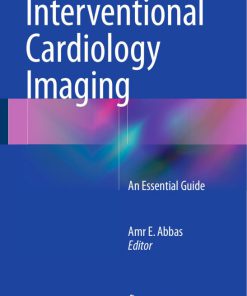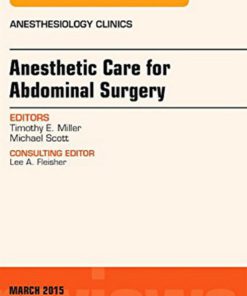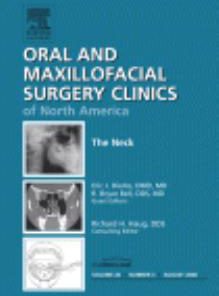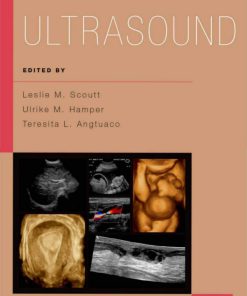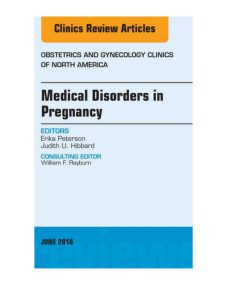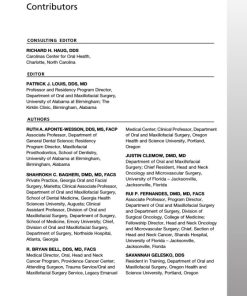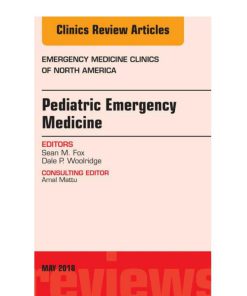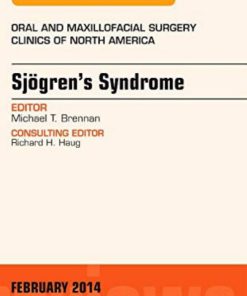Intravascular Physiology An Issue of Interventional Cardiology Clinics Intravascular Physiology An Issue of Interventional Cardiology Clinics 1st Edition by Matthew J Price ISBN 0323400914 9780323400916
$50.00 Original price was: $50.00.$25.00Current price is: $25.00.
Authors:Matthew J. Price , Tags:Interventional Cardiology Clinics; 4 (2015) 1. doi:10.1016/S2211-7458(15)00020-6 , Author sort:Price, Matthew J. , Ids:DOI; dx.doi.org , Publisher:Elsevier Inc , Comments:Comments:Interventional Cardiology Clinics, 4 (2015) 1. doi:10.1016/S2211-7458(15)00020-6
Intravascular Physiology, An Issue of Interventional Cardiology Clinics Intravascular Physiology, An Issue of Interventional Cardiology Clinics 1st Edition by Matthew J Price – Ebook PDF Instant Download/Delivery. 0323400914, 9780323400916
Full download Intravascular Physiology, An Issue of Interventional Cardiology Clinics Intravascular Physiology, An Issue of Interventional Cardiology Clinics 1st Edition after payment
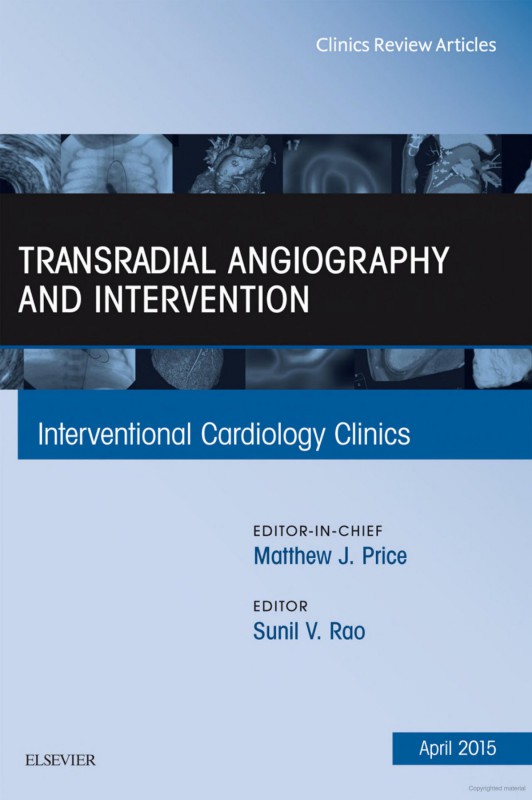
Product details:
ISBN 10: 0323400914
ISBN 13: 9780323400916
Author: Matthew J Price
This issue of Interventional Cardiology Clinics, edited by Allen Jeremias, is devoted to Intravascular Physiology. Dr. Jeremias assembled a group of expert contributors to review the following topics: Evolution of Coronary Physiology – Basic Concepts of FFR and CFR; Concept of “Functional PCI” – The Rational for Physiologic Lesion Assessment for PCI Guidance; Limitations and Pitfalls of FFR and Adenosine-Induced Hyperemia; Evidence for the Use of FFR to Guide Clinical Decision-Making – The Landmark FFR Clinical Trials; Evaluation of Microvascular Disease and Clinical Outcomes; Hyperemic vs. Resting Indices for the Assessment of CAD; FFR for the Evaluation of Tandem and Bifurcations Lesions, Left Main, and Acute Coronary Syndromes; and CT-FFR: Basic Concept and Clinical Implementation.
Intravascular Physiology, An Issue of Interventional Cardiology Clinics Intravascular Physiology, An Issue of Interventional Cardiology Clinics 1st Table of contents:
Preface. Coronary Physiology: Basic Concepts and Clinical Applications
History and Development of Coronary Flow Reserve and Fractional Flow Reserve for Clinical Applications
Key points
Introduction
Clinical motivations
Technical developments
Coronary flow reserve
Fractional flow reserve
Summary
Financial support and relationships with industry
References
The Concept of Functional Percutaneous Coronary Intervention: Why Physiologic Lesion Assessment Is Integral to Coronary Angiography
Key points
Introduction
Appropriate use criteria for coronary revascularization
Noninvasive ischemic evaluation
Anatomic lesion severity and coronary hemodynamics
Invasive evaluation of ischemia
Fractional flow reserve as an integral part of coronary angiography
A new approach of functional angiography
Summary
References
Limitations and Pitfalls of Fractional Flow Reserve Measurements and Adenosine-Induced Hyperemia
Key points
Introduction
Basic principles and prerequisites
Pitfalls of fractional flow reserve measurements
Limitations of methods for induction of hyperemia
Limitations of a single cutoff value
Summary
References
Landmark Fractional Flow Reserve Trials
Key points
Introduction
Validation in comparison to noninvasive ischemia assessment
Safety of revascularization deferral with normal fractional flow reserve in single-vessel coronary disease
Fractional-flow-reserve-guided revascularization in multivessel disease
Fractional-flow-reserve-guided revascularization among patients with stable coronary disease
Summary/discussion
References
Evaluation of Microvascular Disease and Clinical Outcomes
Key points
Introduction
Direct angiographic assessment
Coronary flow reserve
Resting coronary flow patterns
Index of microcirculatory resistance
Instantaneous hyperemic diastolic velocity-pressure slope
Wave intensity analysis
Summary
References
Can Resting Indices Obviate the Need for Hyperemia and Promote the Routine Use of Physiologically Guided Revascularization?
Key points
Introduction
Is hyperemia physiologically essential for the pressure-only assessment of a stenosis?
Is hyperemia essential to unmask true stenosis severity?
Is hyperemia useful in vessels with tandem stenoses?
Future areas for development
Summary
Acknowledgments
References
Fractional Flow Reserve for the Evaluation of Tandem and Bifurcation Lesions, Left Main, and Acute Coronary Syndromes
Key points
Introduction
Fractional flow reserve in tandem lesions
Fractional flow reserve in ostial or bifurcation lesions
Fractional flow reserve in left main coronary artery disease
Fractional flow reserve in acute coronary syndromes
Summary
References
Noninvasive Fractional Flow Reserve Derived from Coronary Computed Tomography Angiography for the Diagnosis of Lesion-specific Ischemia
Key points
Introduction
Fractional flow reserve for the assessment of lesion-specific ischemia
Noninvasive fractional flow reserve computed from standard coronary computed tomography angiography images
Evidence in the literature on the diagnostic value of FFRCT
Cost-effectiveness of FFRCT
Future perspectives
Summary
References
Association of Wall Shear Stress with Coronary Plaque Progression and Transformation
Key points
Introduction
Role of wall shear stress in endothelial function
Mechanotransduction of wall shear stress in endothelial cells
Effects of wall shear stress on the endothelium
Role of wall shear stress in coronary plaque progression
People also search for Intravascular Physiology, An Issue of Interventional Cardiology Clinics Intravascular Physiology, An Issue of Interventional Cardiology Clinics 1st:
interventional cardiology clinics
interventional cardiology clinics impact factor
interventional cardiology clinics abbreviation
is interventional cardiology worth it
how to become an interventional cardiologist




